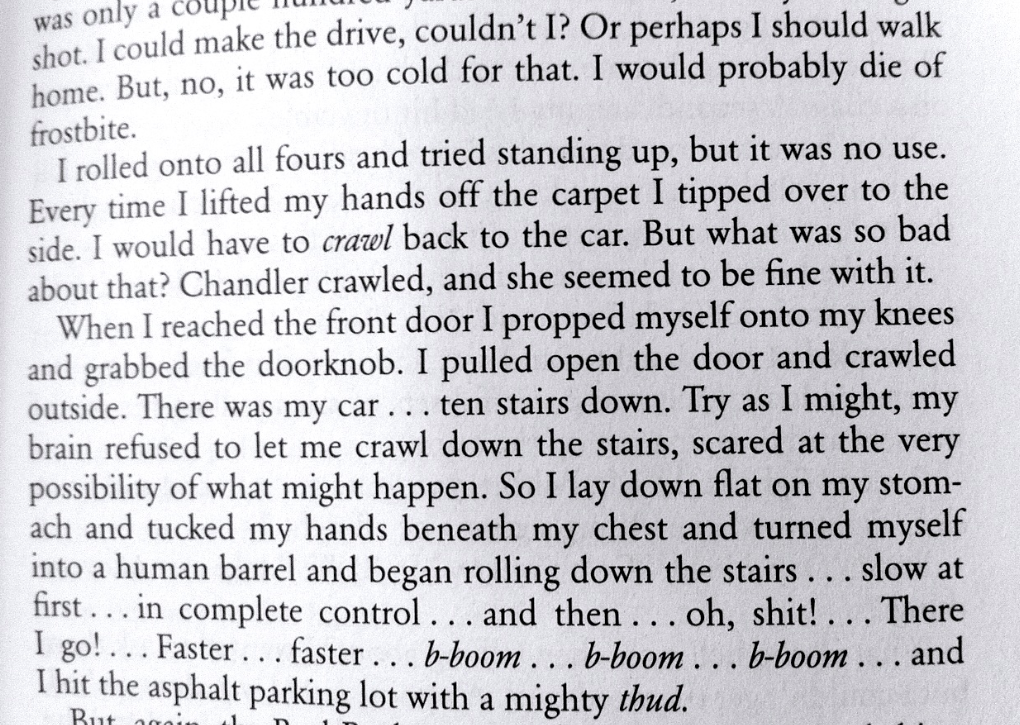To compare the three products, movie, book, screenplay...
When Teresa, Belfort's first wife, points out a want ad in a paper for a stockbroker, Scorsese visualizes it through a series of close up of the want ads; our eyes are led from ad to ad until we're glued to an extreme close up of the ad Teresa's seen. In the screenplay the phrase is:
When Teresa, Belfort's first wife, points out a want ad in a paper for a stockbroker, Scorsese visualizes it through a series of close up of the want ads; our eyes are led from ad to ad until we're glued to an extreme close up of the ad Teresa's seen. In the screenplay the phrase is:
Sequence is also reinterpreted.
While the book tends to move - more or less - linearly, things aren't nearly as chronological in the screenplay and book.
And yet the leaps in time appear to - paradoxically - make the film feel more like the book's sequencing.
Example: Very early on, in chapter 2 in the book, shows the Duchess hurling water at Belfort for womanizing. In the screenplay, however, it's scene 116 located on page 58 (about an hour into the action), and in the film it's situated even later.
Absent from the screenplay and the film is the ensuing, more involved Steve Madden chapter. No, not the shellacking Madden gets in the office, addressing the wolves before Belfort rescues him; that's in all three products. I'm referring to Belfort's later career decision to work with Madden in his office in Queens building the shoe empire. Is this part of the material that Scorsese removed in order to get the film's run time down to three hours from it's original four?
Belfort's depravity - and his wicked sense of humor - remain intact throughout all three products.
Naturally, the book has more depravity than either the script or movie. All three products rely on the first person voice over, right down to the passages when Belfort stops explaining his devious finance schemes, adding lines like "it doesn't matter".
Where's DiCaprio in all of this?
In the screenplay, during his first sales call in the penny stock offices on Long Island, we get a man sitting at desk speaking with silver tongue as he closes a deal.
No indication in the script about what DeCaprio might be doing aside from talking into the phone.
But in the film DiCaprio stands and simulates fucking his customer from behind while talking on the phone as his co-workers watch in amazement.
Who came up with that? Scorsese? DiCaprio?
The speeches...paeans to rampant free market capitalism.
The book provides plenty of source material used just about verbatim in the speeches.
Perhaps the most emblematic of them all is this one, taken almost word for word from the book:
And, just before that one, we get:
Taking a look at the comical Quaalude scene at the country club pay phone and entrance, we get a nice view of how the three products (book, screenplay, movie) work together.
Here's the book:
Here's the script:
A still from the film:
Scorsese talks about DiCaprio's comedic gifts as being reminiscent of Jerry Lewis and Jacques Tati. And he's right. Compositionally, the scene outside the club is quite elegant. The distance between DiCaprio at the top of the stairs and his car is but 20 feet but the camera, passively in the middle, looks at both ends of the journey and it feels like a million miles.
---
Here's a look...behind the scenes...
And while we're at it, more Scorsese but for Goodfellas at








Comments
Post a Comment